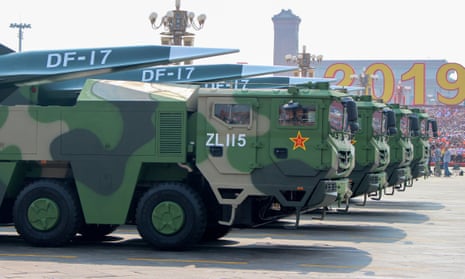China’s launch of a nuclear-capable missile carrying a hypersonic glide vehicle also included the unprecedented launch of a separate missile from that vehicle, according to multiple reports.
The test showed China’s development of its strategic, nuclear-capable weapons as more advanced than any had thought, surprising Pentagon officials, the Financial Times and Wall Street Journal reported.
The test, thought to have taken place in July, made global headlines when it emerged last month that the vehicle had flown into space and completed a partial orbit of the Earth.
Now, the test is believed to have also included the release of a separate missile that rocketed away, falling harmlessly into the South China Sea. Neither the United States nor Russia has demonstrated the same ability, which requires launching a missile from a parent vehicle traveling five times the speed of sound.
The Financial Times, which first reported the test over the weekend, said US military experts are trying to understand how China mastered the technology, which puts it ahead in the hypersonic arms race. The Wall Street Journal confirmed the report on Monday.
The 27 July Chinese hypersonic test had already caused alarm in the Pentagon and US intelligence. In it, the launch vehicle, a long-range missile, carried the guided hypersonic warhead around the world and then released it toward a test target inside China.
The hypersonic missile, which unlike ballistic missiles can be steered, missed the target by more than 20 miles (32km), which a senior Pentagon official, General John Hyten, said last week was “close enough” given it was an initial test.
The potential role of the released missile was unclear. It could be used to target or deflect an enemy country’s defences against a hypersonic attack.
Whatever the use, it underscored the speed with which China has mounted a strategic challenge to the US military.
The Pentagon says China has also accelerated the production of nuclear warheads, which could be carried by a hypersonic missile as well as conventional submarine and land-based ballistic missiles.
Hyten told CBS News last week that the July hypersonic test, and a second one three weeks later, “should create a sense of urgency” in the US.
